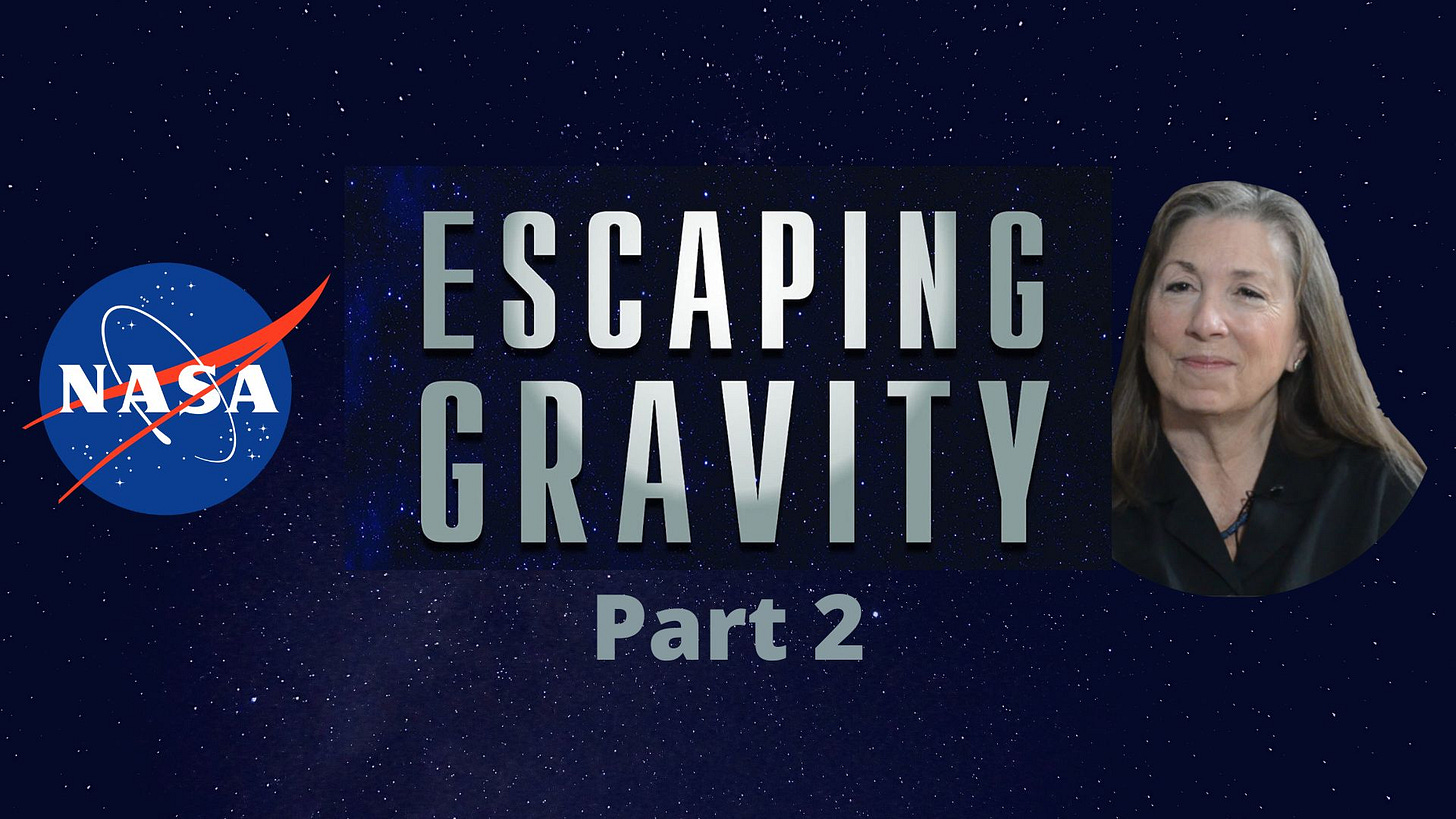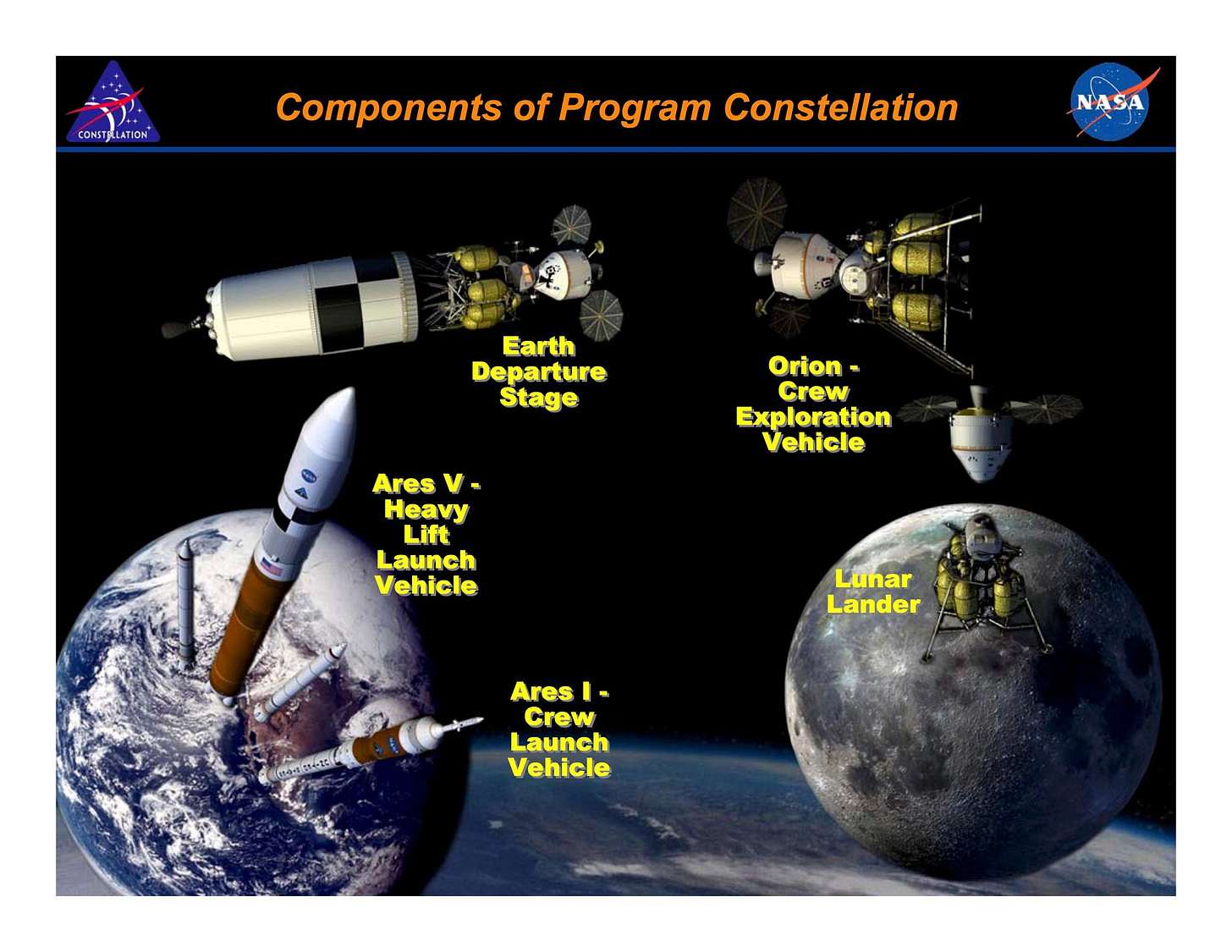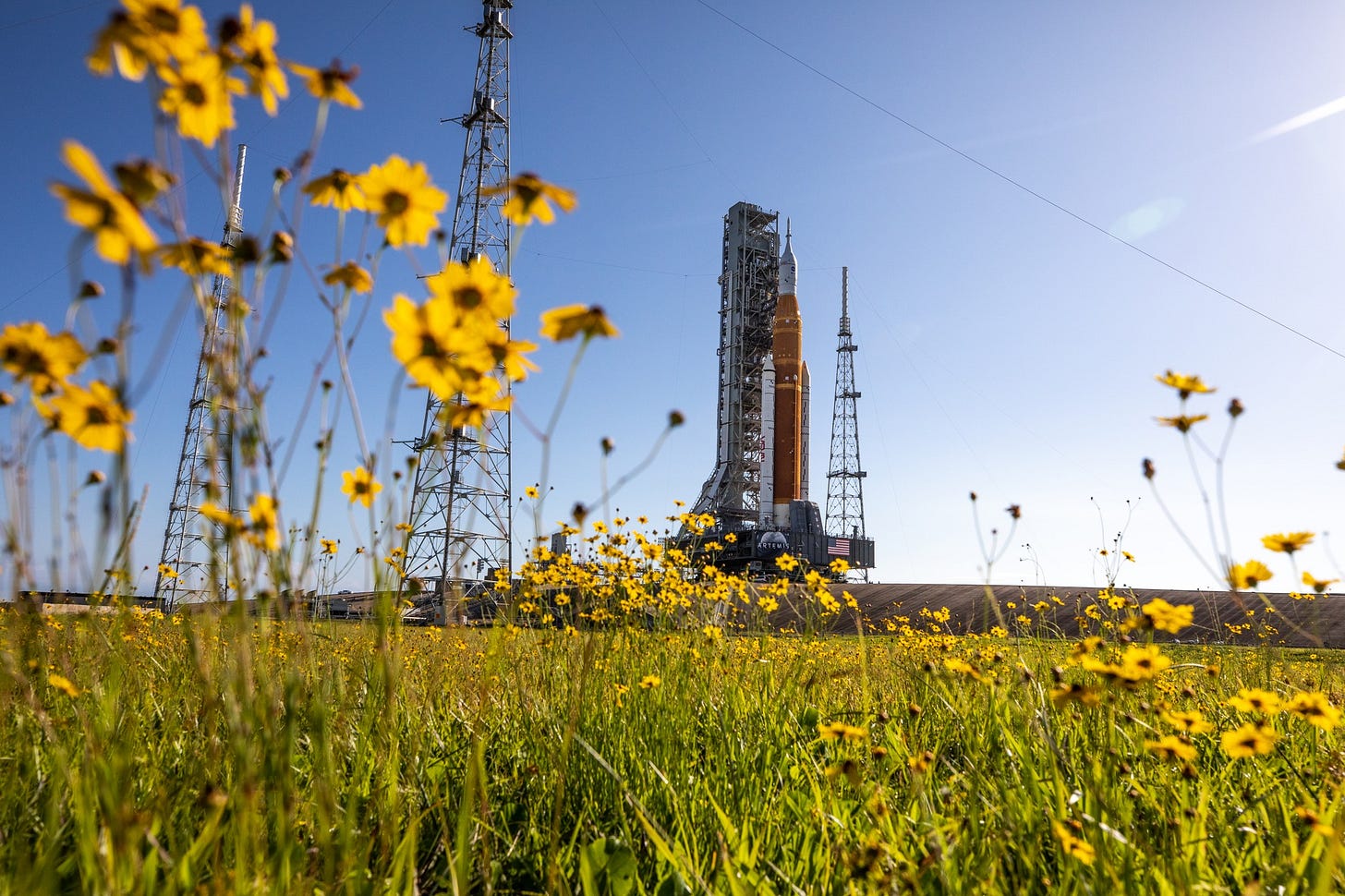The moon mission Obama couldn’t kill
Why the privatization of space was only partially successful

A video version of this newsletter and a longer interview with Lori Garver is here.
Former NASA Deputy Administrator Lori Garver gets some of the credit for the commercialization of space. But she didn’t win the war. NASA is preparing to launch a big rocket toward the moon. It’s a program President Barack Obama told her to kill. She did put an end to the Constellation program. But it didn’t die.
In her new book “Escaping Gravity: My Quest to Transform NASA and Launch a New Space Age,” Garver recounts the battles to bring privatization to NASA. The self-described “space pirate” told me she didn’t want to cancel the Constellation program to return to the moon if it was running well.

Part of a 2006 NASA presentation on the Constellation program. (Credit: NASA)
“The programs in place were horribly off track. And we needed to do something new. So it wasn't change for change sake,” she said. She was one of President Obama’s closest advisers on space issues. At their first meeting Obama told Garver, “I think we should do fewer things better.”
PITCH TO THE PRESIDENT
Garver, a firm believer in the privatization of space, explained the theory to Obama.
Commercialization, she told the new President, would mean lower costs. “We could reduce the overhead infrastructure costs and allow NASA to do the hard things, the unique things, the real things in the public interest. That’s what he wanted to do.” She recounted.

Garver served as NASA Deputy Administrator during the Obama Administration. (Credit: Escaping Gravity)
There was pushback inside NASA over the cancellation of Constellation. Some members of Congress were livid. There is a space-industrial complex. Various states and companies didn’t want to see the moon mission and its cost-plus contracts (price can increase if unforeseen costs or changes arise) disappear.
CONGRESS ACTS
Congress took action. It ordered NASA to reinstate the program. “We were dictated to that [the] program would use existing contracts and contractors, that it would fly by the end of 2016,” Garver says with a bit of snark in 2022.
The remnants of Constellation were repackaged as Artemis, the current program to return to the moon. The SLS rocket was built by the same contractors. The capsule from the old program, Orion, will be atop the rocket. A test flight around the moon could launch in a matter of weeks.

Artemis 1 at Kennedy Space Center with its SLS rocket and Orion capsule with launch set for the end of August. (Credit: NASA)
Garver shook her head when she said, “that legislation drove us to do this very idiotic thing, which we are still doing, and which is costing the American people more than 40 billion dollars. And we haven't launched yet.”
NOT SUSTAINABLE
Garver laments that these heavy-lift, deep space programs were not privatized. “If we run a competition similar for heavy-lifts, I have no doubt we could have accomplished much more,” she said, adding, “We still have these holdover programs… they may fly a few times but they are not sustainable.”
Garver talks about Congressional action which ordered parts of the Constellation program continue. Episode two of our interview is here.
Garver believes we should be Escaping Gravity at a pace much higher faster than we see today. While her book is a partial victory lap, she knows her ultimate goal was not reached during her time at NASA or in the following years.
As she admitted, “It still makes me sad that I wasn't able to have people see earlier how these programs could be so beneficial.”
Since our interview, NASA has decided to transfer production, testing, transportation, and more of the moon rocket to one contractor to run as a services program. NASA will not conduct a competition as Garver would have preferred. It is however, a move toward more privatization.




